第16章 THE COUNTESS AND THE COZENER(2)
Anne, there is every cause for assurance, was in herself the best advertisement for her wares.Rachel was a fat old hag.Anne, prettily fair, little-boned, and deliciously fleshed, was neat and elegant.The impression one gets of her from all the records, even the most prejudiced against her, is that she was a very cuddlesome morsel indeed.She was, in addition, demonstrably clever.Such a man of talent as Inigo Jones supported the decoration of many of the masques he set on the stage with costumes of Anne's design and confection.Rachel could neither read nor write.
It is highly probable that Anne Turner made coin out of the notes which her late husband, so inquisitive of mind, had left on matters much more occult than the manufacture of yellow starch and skin lotions.It was also rumoured,'' says Mr Sabatini, that she amassed gold in another and less licit manner: that she dabbled in fortune-telling and the arts ofdivination.'' We shall see, as the story develops, that the rumour had some foundation.The inquiring mind of the late Dr Turner had led him into strange company, and his legacy to Anne included connexions more sombre than those in the extravagantly luxurious Court of King James.
In 1610 the elegant little widow was flourishing enough to be able to maintain a lover in good style.This was Sir Arthur Mainwaring, member of a Cheshire family of good repute but of no great wealth.By him she had three children.Mainwaring was attached in some fashion to the suite of the Prince of Wales, Prince Henry.And while the Prince's court at St James's Palace was something more modest, as it was more refined, than that of the King at Whitehall, position in it was not to be retained at ease without considerable expenditure.It may be gauged, therefore, at what expense Anne's attachment to Mainwaring would keep her, and to what exercise of her talent and ambition her pride in it would drive her.And her pride was absolute.It would, says a contemporary diarist, make her fly at any pitch rather than fall into the jaws of want.''
Antony Weldon, The Court and Character of King James (1651).
In his romance The Minion, Rafael Sabatini makes the first meeting of Anne Turner and the Countess of Essex occur in 1610 or 1611.With this date Judge A.E.Parry, in his book The Overbury Mystery, seems to agree in part.There is, however, warrant enough for believing that the two women had met long before that time.Anne Turner herself, pleading at her trial for mercy from Sir Edward Coke, the Lord Chief Justice, put forward the plea that she had been ever brought up with the Countess of Essex, and had been a long time her servant.'' She also made the like extenuative plea on the scaffold.Judge Parry seems to follow some of the contemporary writers in assuming that Anne was a spy in the pay of the Lord Privy Seal, the Earl of Northampton.If this was so there is further ground for believing that Anne and Lady Essex had earlier contacts, for Northampton was Lady Essex's great-uncle.The longer association would go far in explaining the terrible conspiracy into which, from soon after that time, the two women so readily fell together--a criminalconspiracy, in which the reader may see something of the false nurse'' in Anne Turner and something of Jean Livingstone in Frances Howard, Lady Essex.
Fisher Unwin, 1925.State Trials (Cobbett's edition).Antony Weldon.
It was about this time, 1610-1611, that Lady Essex began to find herself interested in the handsome Robert Carr, then Viscount Rochester.Having reached the mature age of eighteen, the lovely Frances had been brought by her mother, the Countess of Suffolk, to Court.Highest in the King's favour, and so, with his remarkably good looks, his charm, and the elegant taste in attire and personal appointment which his new wealth allowed him lavishly to indulge, Rochester was by far the most brilliant figure there.Frances fell in love with the King's minion.
Rochester, it would appear, did not immediately respond to the lady's advances.They were probably too shy, too tentative, to attract Rochester's attention.It is probable, also, that there were plenty of beautiful women about the Court, more mature, more practised in the arts of coquetry than Frances, and very likely not at all `blate'--as Carr and his master would put it--in showing themselves ready for conquest by the King's handsome favourite.
Whether the acquaintance of Lady Essex with Mrs Turner was of long standing or not, it was to the versatile Anne that her ladyship turned as confidante.The hint regarding Anne's skill in divination will be remembered.Having regard to the period, and to the alchemistic nature of the goods that composed so much of Anne's stock-in-trade at the sign of the Golden Distaff, in Paternoster Row, it may be conjectured that the love-lorn Frances had thoughts of a philtre.
With an expensive lover and children to maintain, to say nothing of her own luxurious habits, Anne Turner would see in the Countess's appeal a chance to turn more than one penny into the family exchequer.She was too much the opportunist to let any consideration of old acquaintance interfere with working such a potential gold-mine as now seemed to lie open to her pretty but prehensile fingers.Lady Essex was rich.Shewas also ardent in her desire.The game was too big for Anne to play single-handed.A real expert in cozening, a master of guile, was wanted to exploit the opportunity to its limit.